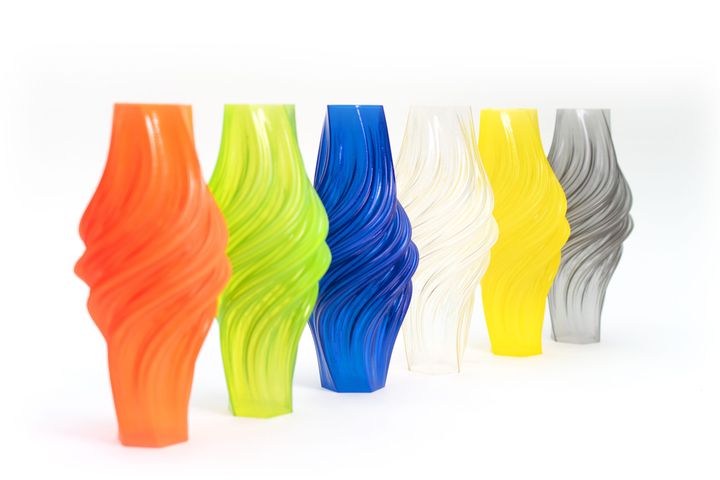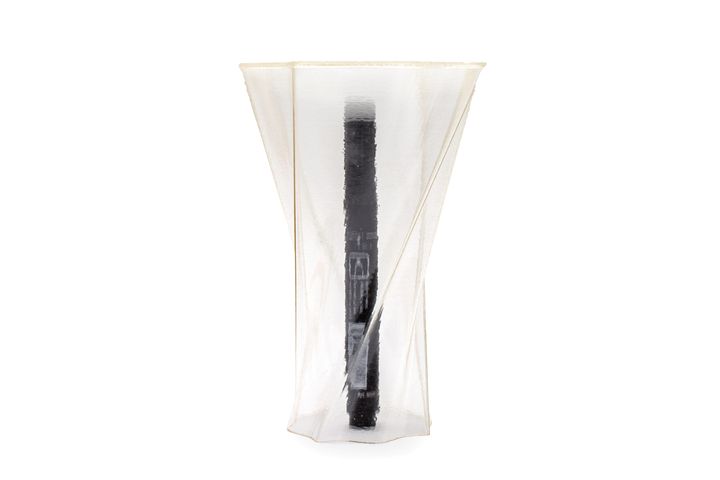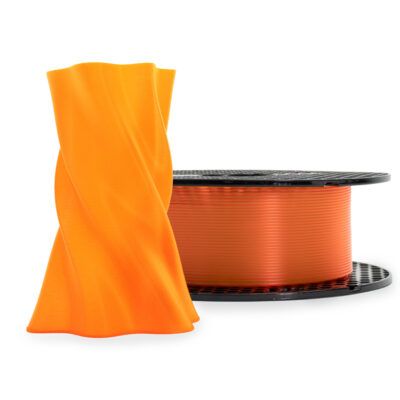
Prusa Research announced the availability of a new and unusual material for 3D printing for their Prusament line: PVB.
“PVB” is short for the chemical name Polyvinyl butyral, a substance typically used in laminated glass and solar cells. Now you can 3D print with this material using Prusa’s own PVB filaments.
PVB 3D Print Material
PVB has not been a particularly popular material for 3D printing, and there are few examples of its use up to this point. Perhaps the most notable would be Polymaker’s PolySher system, which makes use of PVB filament under their brand name “PolySmooth”.
As a 3D print material, PVB is not that much different from PLA. It has low warping, but also low temperature resistance. Its layer adhesion is said to be somewhat worse than PLA, making it not a great material for use in mechanically stressed applications. It is also quite hygroscopic, meaning it tends to absorb moisture from the air. This moisture will mess up subsequent 3D prints, so it’s strongly advised that you dry the filament before use using a drying system.
That sounds like PVB might be a lot more challenging to 3D print than PLA, so why would anyone use it?
It turns out there are some substantial advantages to PVB that you can’t find with other materials.
First, its optical properties offer a great deal of transparency: you can see through this material, if the surface is sufficiently smooth. This is reminiscent of PETG material, but it appears PVB is a lot more flashy when properly post-processed.
And this leads to the most notable item on PVB’s list of properties: it can be softened by common IPA (isopropyl alcohol).
PVB Smoothing

Why is this important? It’s because this property allows one to smooth the otherwise-rough surface of PVB 3D prints in a relatively easy manner.
Smoothing 3D prints has almost always been necessary due to the layered nature of material deposition, but is usually problematic. Mechanical smoothing requires placing the print in a vibratory tub filled with an appropriate medium to literally erode off protrusions. This can be done on any 3D print material, but it often damages delicate structures. Another approach is chemical smoothing, where the print is exposed to a chemical that softens the exterior surface, hopefully making it smooth.
The problem with chemical smoothing is that there are few “easy” pairs of materials and smoothers for post-processing. The most commonly found combo is ABS/ASA and acetone. However, ABS/ASA are tricky use in a 3D printer due to extreme warping, and acetone is a semi-dangerous material to work with.
But here we have a combo of Prusament PVB and IPA, a material you can easily buy at any hardware store. You probably already have some on hand, and it’s not that expensive.
The problem is in how to apply the IPA to the 3D model. Prusa Research describes the positives and pitfalls of several model application techniques in their lengthy announcement, including immersion, painting, vapor exposure and spraying. I won’t go into them all, but you’d best read through them carefully if you intend on using Prusament PVB.
Perhaps the best option is to make use of Polymaker’s PolySher device, which of course was originally intended for their own PolySmooth material. This enclosed device produces a fog of IPA particles that stick to the model’s surface and soften the PVB material. It includes safety features, timers and more. Unfortunately it is a bit pricey, so some 3D printer operators may not be able to justify a purchase if using PVB only occasionally.
Timing is critically important when IPA-smoothing a 3D model. If you expose the surface too long, it can sag. This is especially important on delicate structures or those requiring significant mechanical properties, which honestly aren’t likely to be 3D printed in PVB. The most likely target are larger flat or curved shapes that highlight PVB’s transparency. In other words, vases.
The optimal approach for 3D printing vases is to use “vase mode”, sometimes called “spiral mode”. It’s found in print settings and constrains the printing of perimeters. In fact, print settings using this mode allow only a single perimeter, which makes for a smoother and more transparent, yet fragile, print.
Prusa Research recommends overcoming the fragility of this mode by suggesting use of a 0.8mm nozzle diameter when using Prusament PVB, as opposed to the standard 0.4mm diameter nozzle. This will allow deposition of far more material in a single wall, thus making the model stronger.
As you can see, PVB is a bit more challenging to 3D print than your average material, but in the end your efforts could be worth the time as the prints might look amazing.

Prusament PVB is shipping on a 500g spool at a price of US$25 in any of five brilliant colors. They’re also offering an inexpensive 0.8mm nozzle that PVB buyers might be interested in using.
Will you be using Prusament PVB?
Via Prusa Printers
